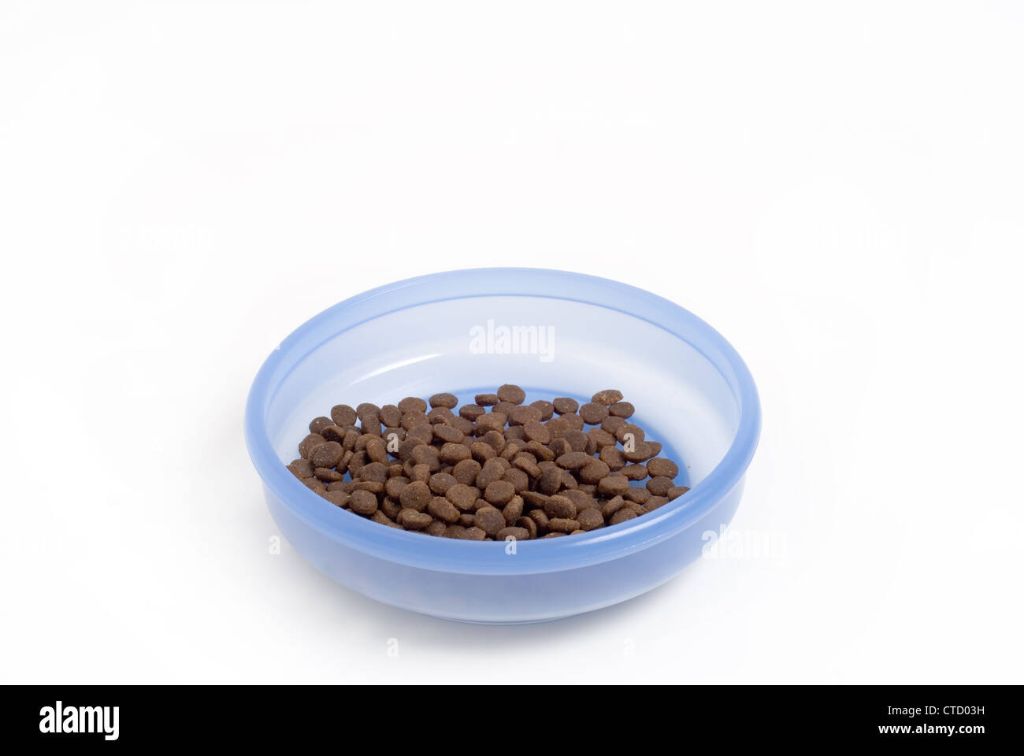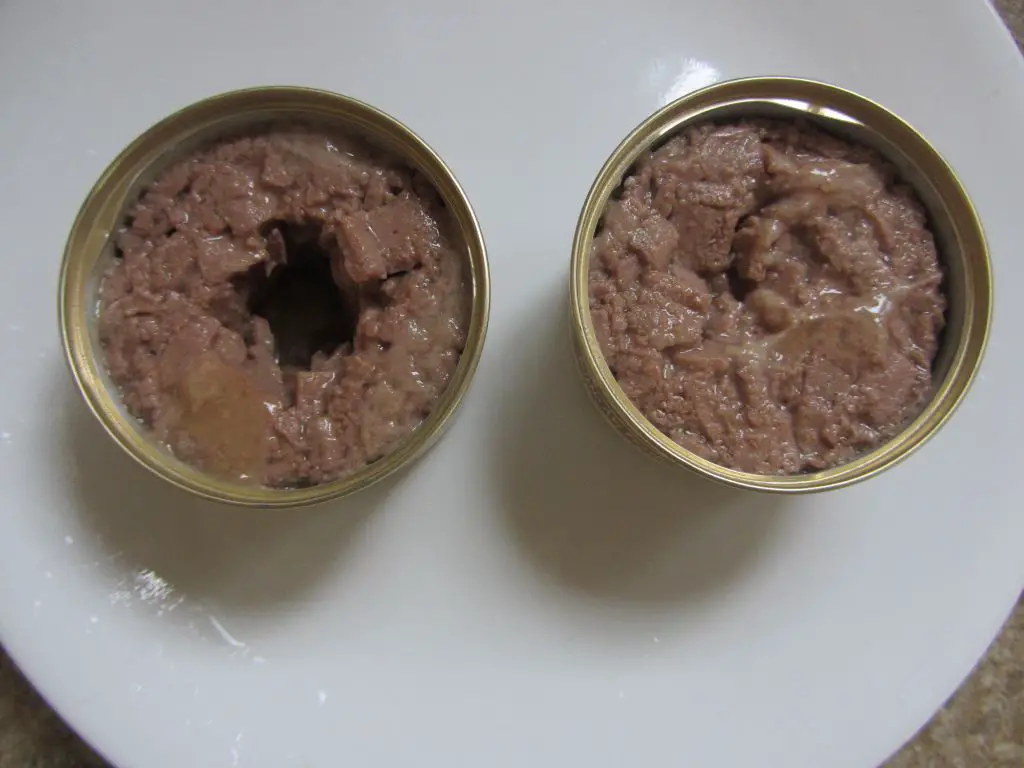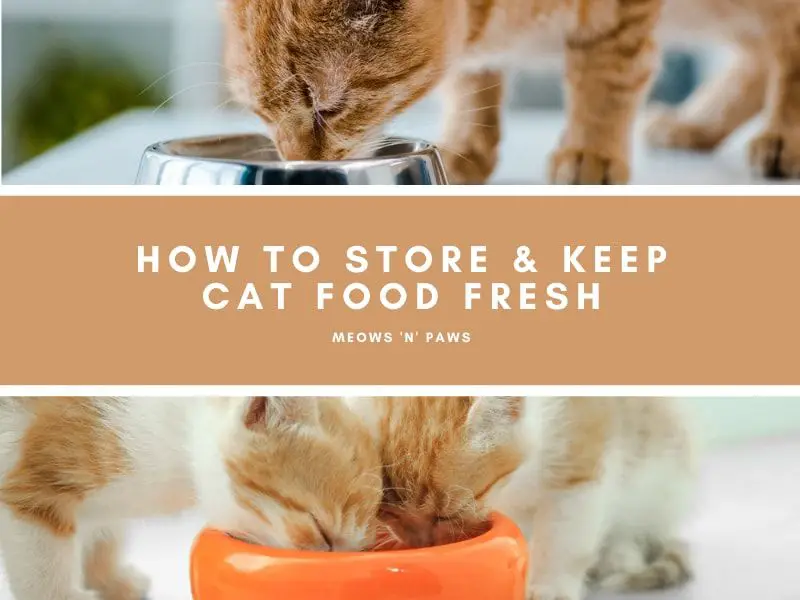Cat food comes in a few different forms – dry kibble, wet canned food, and treats. Each type of cat food has a different shelf life and storage requirements to keep it fresh. In general, unopened dry cat food can last 6-12 months past its “best by” date, while unopened canned cat food can last 2-5 years past its date. Once opened, dry food lasts about 6 weeks and canned food about 7 days in the refrigerator. Cat treats also have a shelf life around 6-12 months unopened. Proper storage is important to maintain freshness and nutritional value. This guide will provide details on signs of stale cat food and tips for optimal storage.
Dry Cat Food
Dry cat food, sometimes called kibble, is made by cooking, extruding, and drying ingredients into small, hard pellets. It typically contains meat proteins, grains, vegetables, vitamins, and minerals. Dry food has a moisture content of around 10%, which makes it relatively non-perishable compared to wet cat food.
When stored properly in a cool, dry place, unopened bags of dry cat food can last for months past the ‘best by’ date on the package. Once opened, the kibble will stay fresh for 4-6 weeks as long as it is stored in an airtight container. The oils in kibble can go rancid over time when exposed to heat and oxygen, causing it to spoil (https://blog.theanimalrescuesite.greatergood.com/how-long-does-dry-cat-food-stay-fresh/).
Signs that dry food has gone bad include a rancid smell, visible mold, texture changes, and your cat refusing to eat it. Discard any spoiled dry food immediately.
Canned Cat Food

Canned or wet cat food typically contains 70-80% moisture, making it a good source of hydration for cats (1). It comes in convenient single-serve pouches or cans and provides a soft, palatable texture that many cats enjoy. The high moisture content means that canned food does not stay fresh as long as dry kibble.
Once opened, canned cat food will only stay fresh for 3-4 days when refrigerated and 1-2 days at room temperature (2). The quality and palatability will decline rapidly after that time. Any leftover wet food remaining in the can or pouch should be promptly refrigerated in a sealed container or zip top bag. Discard any uneaten portion after 3-4 days. Leaving wet food out too long at room temperature can allow pathogenic bacteria like Salmonella to multiply to dangerous levels (3).
When shopping, choose canned recipes labeled for refrigeration after opening. Cans or pouches designed for refrigeration after opening will typically remain fresh for 5-7 days when promptly refrigerated (4). This gives cats more time to finish the leftovers. Opt for small cans or single-serve pouches to avoid having large amounts of leftovers.
Properly storing opened canned cat food preserves freshness and prevents spoilage and foodborne illness. Refrigerate promptly in a sealed container, and discard after 3-4 days. Leaving wet food out too long creates unsafe bacteria levels.
Sources:
(1) https://www.hillspet.com/pet-care/nutrition-feeding/cat-and-dog-food-storage-tips
(2) https://www.quora.com/How-long-is-a-cats-can-of-opened-leftover-wet-food-good-for-in-the-refrigerator
(3) https://iandloveandyou.com/blogs/pet-blog/how-long-can-you-leave-cat-food-out-for
(4) https://www.hillspet.com/pet-care/nutrition-feeding/cat-and-dog-food-storage-tips
Cat Treats
Cat treats are snack foods made specifically for cats. They come in a variety of flavors, shapes and textures. Most cat treats are made from meat, fish or poultry combined with grains, vegetables and other ingredients. They provide extra nutrition, variety and enjoyment to a cat’s diet.

Cat treats usually have a shelf life of around 18-24 months if unopened. However, once opened the shelf life decreases. Soft treats or treats in pouches generally last 1-2 weeks after opening. Crunchy biscuit style treats can last around 3-6 weeks after opening if stored properly. It’s important to check expiration dates and follow storage instructions to maximize freshness.
According to https://www.tuxedo-cat.co.uk/do-cat-treats-expire/, most dry cat treats last for at least 2 years unopened. But after opening, the shelf life depends on storage conditions. Storing opened treats in a sealed container in the fridge can help them stay fresher for longer.
Once treats pass their expiration date or go stale, they can lose nutritional value. Old treats may also potentially upset a cat’s stomach. It’s best to discard treats that smell bad, are hard/crumbly, moldy, or otherwise deteriorated.
Refrigerating Cat Food
Refrigerating cat food after opening can help preserve freshness and prevent spoilage. Both wet and dry cat food can be refrigerated, though the benefits are greater for opened cans of wet food. According to Should you refrigerate cat food after opening, refrigerating wet cat food after opening can keep it fresh for up to 5-7 days, while letting it sit at room temperature may only keep it safe for up to 2 days.
For dry kibble, refrigeration is not strictly necessary but can help maintain optimum freshness and quality especially in hot, humid weather. Dry kibble can typically be stored for several weeks in an airtight container in the pantry. Refrigeration can prolong its shelf life even further.
Tips for refrigerating cat food include:
- Store opened cans of wet food in a sealed container or ziplock bag.
- Use foil or plastic wrap to cover leftover wet food before refrigerating.
- Place kibble in an airtight plastic, metal, or glass container.
- Label refrigerated food with date opened.
- Use refrigerated wet food within 5-7 days.
- Smell and inspect refrigerated food before serving.
Properly refrigerating opened cat food can maintain freshness and prevent waste. Just be sure to follow storage guidelines and use refrigerated food promptly.
Freezing Cat Food
Freezing cat food is an effective way to extend the shelf life and prevent waste. According to PawTracks, wet cat food freezes particularly well. When frozen properly in an airtight container, wet food can last up to six months in the freezer without losing nutrients or taste. Dry kibble can also be frozen to prolong freshness, lasting up to one year when frozen.
There are several benefits to freezing cat food:
- Prevents waste – Freezing leftovers or large packages lets you save and safely store unused portions.
- Maintains nutritional value – Frozen cat food retains its original nutrient content.
- Saves money – Freezing surplus food from bulk purchases avoids the need to throw it away.
- Provides convenience – Thawed portions can be readily used as needed.
Tips for freezing cat food properly include:
- Break wet food into portions, freeze in airtight bags or containers.
- Spread kibble in a single layer on a baking sheet before freezing to avoid clumping.
- Label bags/containers with contents and freeze date.
- Thaw in the refrigerator; do not microwave frozen cat food.
- Use thawed refrigerated wet food within 3-5 days.
With proper freezing techniques, owners can save unused cat food for future use while retaining taste, texture and nutritional value.
Signs Cat Food Has Gone Bad
There are several clear signs that indicate your cat’s food has spoiled and should no longer be fed to your feline companion. The most obvious is if there are changes in the smell, texture, or appearance of either wet or dry cat food.

Wet or canned cat food will develop an unpleasant or rancid smell when it has gone bad. The texture may become excessively mushy or gelatinous. You may see discoloration, such as graying of the food. Mold may also visibly appear on wet food past its prime.
Dry kibble can smell rancid or stale when it is no longer fresh. It may feel gritty and oily, instead of crunchy. You may see color changes or the kibble itself may appear shriveled up or misshapen. Clumping of the kibble can also be a red flag. If mold is present, that is a sure sign dry food has spoiled.
According to experts, when in doubt, use the old adage “When in doubt, throw it out” in regards to questionable cat food. It is not worth the risk of foodborne illness to you or your cat to consume spoiled cat food. Trust your senses – if something seems off with the look, smell, or texture of your cat’s food, err on the side of caution and discard it.
Food Safety
Feeding your cat spoiled or contaminated cat food can be dangerous. According to https://www.catster.com/guides/can-i-feed-my-cat-expired-cat-food/, expired or improperly stored cat food can promote the growth of mold and bacteria. Consuming food contaminated with mold and bacteria can make cats sick.
Potential dangers include:
– Digestive issues like vomiting and diarrhea
– Dehydration
– Loss of appetite
– Food poisoning
Severe cases of food poisoning or ingesting toxins can even be fatal. Kittens, older cats, and cats with compromised immune systems are most at risk of illness from spoiled cat food.
Signs your cat’s food has spoiled include mold, an unpleasant smell, changed texture, and discoloration. Any wet or dry cat food past its expiration date should be discarded.
Proper Storage
To keep cat food fresh for as long as possible, it’s important to store it properly. Here are some tips for maximizing freshness:

For dry cat food:
- Keep it in a cool, dry place away from direct sunlight. Ideal storage temperature is between 60-75°F. Excessive heat can cause the fat in dry food to go rancid faster 1.
- Store in an airtight container or zipper bag to prevent moisture from getting in. Exposure to moisture can cause mold growth.
- Only open the bag when scooping out food to feed your cat. Re-roll or clip bags to keep air out.
- Transfer food from a torn bag into an airtight container.
For canned cat food:
- Refrigerate after opening and use within 2-3 days. The fridge keeps bacteria growth in check 2.
- Wipe off any debris and make sure the lid is sealed tightly before refrigerating.
- Store unopened cans in a cool, dry place. Don’t stack them too high to avoid dents.
Following proper storage instructions on packaging helps keep nutrients intact and prevent spoilage or contamination issues.
When to Toss Cat Food
It’s important to pay attention to expiration dates and follow guidelines on when to discard old cat food. Dry cat food usually has a shelf life of 6-12 months unopened, and 3-6 weeks once opened, according to experts (https://thecatsite.com/c/how-long-can-you-safely-keep-cat-food-out-for/). Canned wet food lasts around 2-3 years unopened, and just 3-7 days after opening. Any cat food that’s been exposed to moisture, humidity or heat can spoil more quickly.
Signs that dry cat food has gone bad include a rancid smell, change in texture or appearance, and mold growth. For canned food, look for bulging cans, rust on the can, odd odors or appearance changes. If you notice any of these signs of spoilage, it’s best to toss the cat food even if not past the expiration date. Sticking to a first-in, first-out system helps avoid waste.
In general, uneaten wet food that’s been sitting out for more than an hour or two should be discarded, especially in warm conditions. Any leftover canned food after a meal should be promptly refrigerated or tossed out. Properly storing dry and wet cat food also helps maximize freshness.
